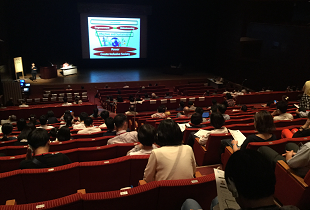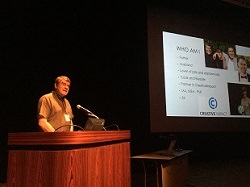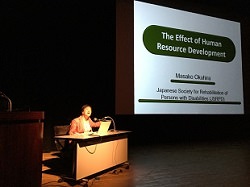WKC Forum report “Role of Assistive Technology in Rapid Ageing in Asia and the World”

Assistive Technologies are an important support for ageing populations in Asia and the rest of the world. They allow disabled and non-disabled ageing people to engage in activities that are meaningful or simply necessary for them to stay healthy and socially included.
The WHO Centre for Health Development (WKC) in cooperation with i-CREATe 2017, and the 32th Japanese Conference on the Advancement of Assistive and Rehabilitation Technology in KOBE, organized a WKC Forum on the Role of Assistive Technology in Rapid Ageing in Asia and the World, on Thursday, 24 August 2017 at the Kobe International Conference Center. Dr Takaaki Chin, the General Chair of the 11th International Convention on Rehabilitation Engineering and Assistive Technology (i-CREATe 2017). Introduced Dr Sarah Louise Barber, Director of WHO Kobe Centre for opening remarks for welcoming the 200 participants in the WKC Forum.

Ageing in place policies require human and technological support, and the balance between the use and deployment of these two forms of support can be characterised by people’s wishes to be taken care of by humans, and local government favouring a mix of human and robotic care to reduce costs and compensate for the lack of workforce to deliver quality long-term care support to older adults. At the heart of these choices are the questions of dignity and autonomy of older people. Several examples of companies developing robotic devices and human-based services were used as examples of the complementarity of these approaches. In conclusion, Mr Hjorth emphasized the need to engage older people (to allow for the co-creation of care models) and to pay attention not only to the financial side, but also to quality of life as an important parameter of policy choice.
The keynote was followed by three presentations on the importance of and examples of the use of assistive technologies for disabled people, as they can serve as a blueprint for how these technologies can be developed, adapted and co-designed with their user to meet the needs of ageing populations.

Mr Hiroyuki Shinoda from the SAKURA Wheelchair Project, and Mr Kazushi Matsumoto from the Asian Seating Assistance Project (ASAP) highlighted the specific challenges of North-South collaboration to support users of wheelchairs and explore the limits of classic donation of assistive technologies versus the benefits of embedding technical assistance to meet the needs of users.
The WKC Forum was conducted in English with simultaneous Japanese and Sign Language interpretation.

